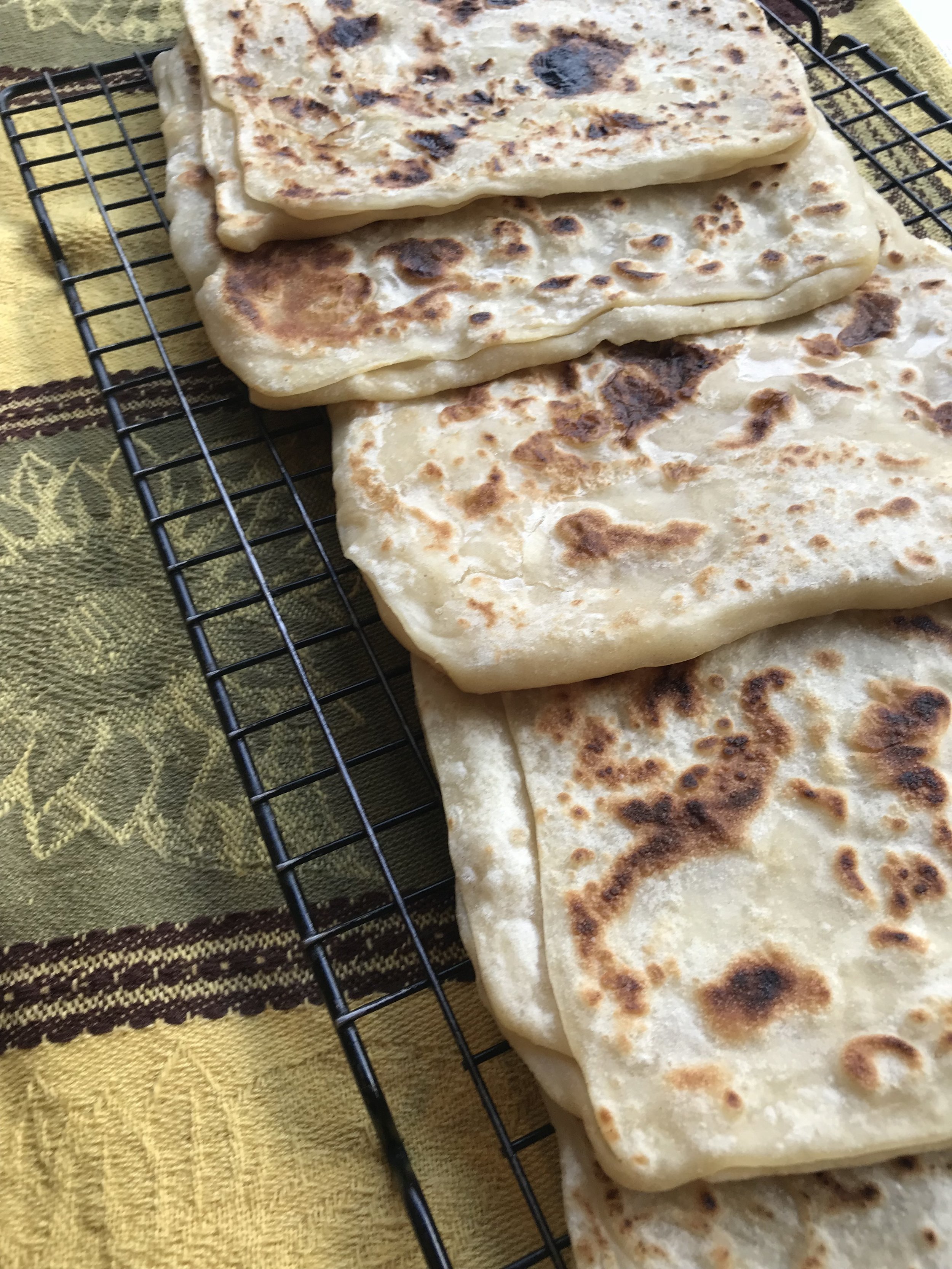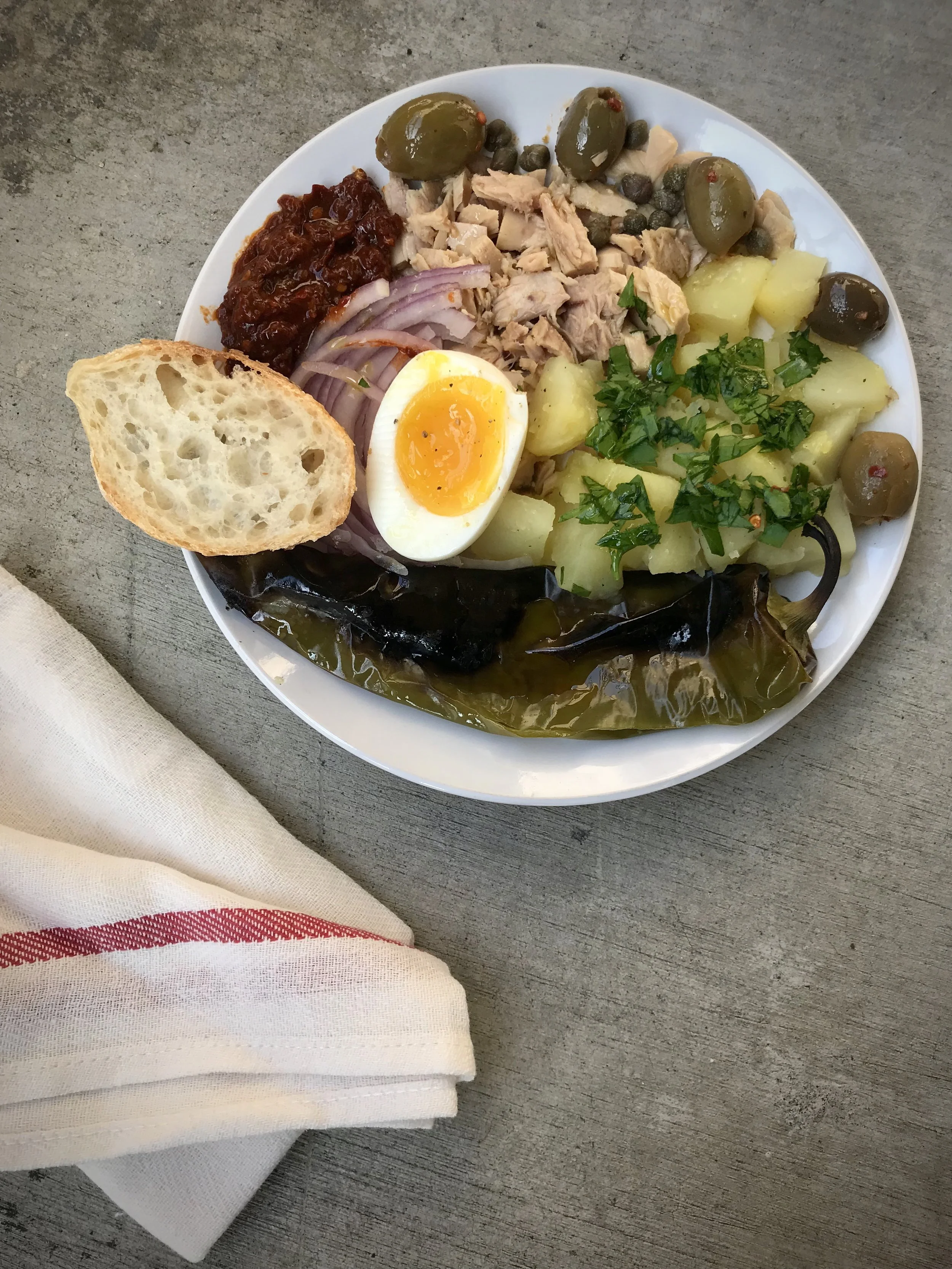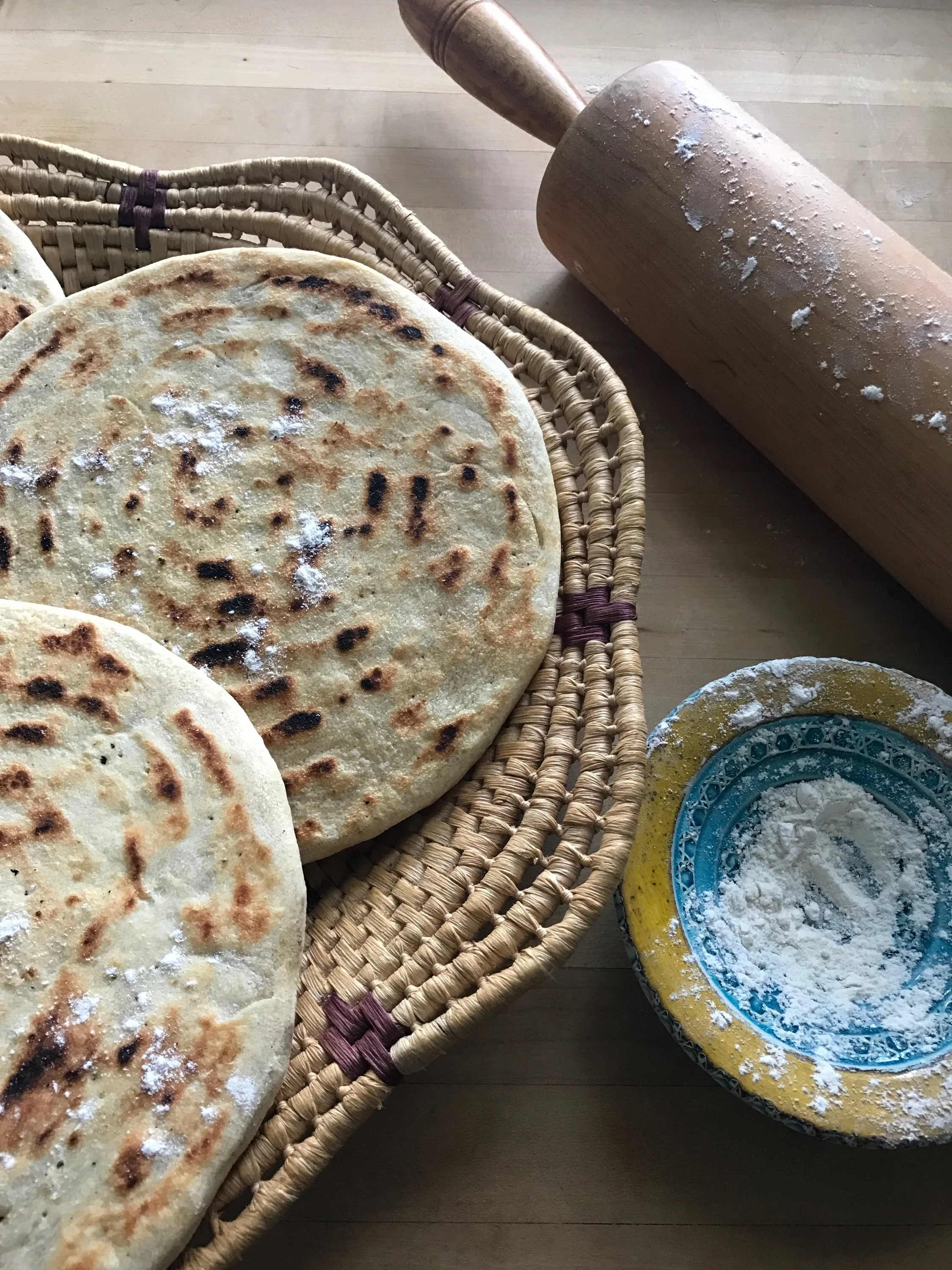Tunisian bread: rougag
There are few things that taste better than home made bread. And there is nothing that tastes better than our grandmother's homemade bread. Our family came from a very poor background in Tunisia and Algeria and most everything was done off the land. Aïcha (or Dada as we called her) had seven children who made it past risky childbirth- six boys and one girl, our aunt Latifa. Dada would regularly go with Latifa to gather branches, twigs, and sticks which they would tie on their backs, carrying them back to the house, hunched over looking like walking “trees.” We still have vivid memories of her mixing all the ingredients together from scratch to make the simplest yet most satisfying bread. In a large metal dish she would dump a large pile of flour and then with her hands, she'd make a hole in the middle, pushing the flour out to create a well. Into the well she'd add the water, salt, and any other ingredients and begin to mix. No measuring cups, no mixing tools. She would use her hands to mix and knead the mixture into a perfect dough. She would divide the dough into even pieces and, in what seemed like a blink of an eye, run her hands over each piece to form it into a perfect smooth sphere. Once they rested, she used her magical hands to shape the spheres into perfect squares or rectangles. Quickly moving her hands and fingers, she knew exactly how to touch the dough to make it fold and stretch the way she wanted—no easy task. She made it look so simple as if the dough knew what to do, but had we tried, it would have looked like an uneven, awkwardly shaped piece of bread. With all of her dough ready to go, she would take it over to the outdoor clay oven and cook it herself. Coming back to the house with a tray full of hot, fluffy, slightly charred bread got everyone gathered around the table. It completed any meal but best of all was delicious enough on its own.
Even as our grandmother got older and her daughter-in-law took over the cooking for the extended family, Dada continued to be the in-house bread queen, making everything from khobz tabouna to rougag (a thin bread with many layers), as pictured below, and today's recipe.
Dada (Allah yerhamha) making rougag old-school style
Ingredients (makes about 8 pieces of bread):
5 cups flour
2 cups water (you may end up only using 1.5)
1tsp salt
Vegetable oil
Preparation:
In a food processor or bread maker, start by adding the flour and 1.5 cups of water. Top with salt and turn the appliance on. If you're mixing by hand, make sure all the ingredients are combined but don't over-mix. Once the dough is mixed well and comes together, feel it to see if it's too dry or too wet. You want it to be smooth and soft but not overly dry or overly wet and sticky. If it is on the dryer side add another half cup of water and feel again. The dough will vary depending on location and weather.
Once the dough has formed, roll it out by hand into a log shape and cut it into smaller pieces, we found with this amount of flour you should be able to get 8 balls or breads. Roll each small piece into a ball and cover well with oil turning the prices every so often as not to dry out. Let rest for 10-20 minutes or until rested enough that the dough fills out easily.
On a flat surface, start to stretch the dough out into a thin circle, like a pizza (but with no crust). Pull the top part of the dough down to the center (it should be quite stretchy/malleable). Then pull the bottom part of the dough up to the center making a long rectangle-ish. Then pull the right side of the dough to the center and repeat with the left, making a square. (This folding creates the layers.) this folding takes a little practice and patience, you will need to gently tug and pull at the dough to make it the shape you want.
Alternatively, you can make triangle rougag instead. This folding method is slightly easier. Start off the same as the rectangle bread by creating a large thin circle of dough. Then fold the circle in half, then in half again.
Once all the prices have been folded to the desired shape, they must be flattened again before cooking. Use your hands or a rolling pin and flatten to the desired size, about the size of a dinner plate. It’s easiest to flatten one or two at a time, and while one cooks, flatten another.
Heat a grill pan on the stove and let it get hot. Place one of the pieces of dough on the pan and let it start to cook. It may form little bubbles like a pancake. Check the other side with a spatula by flipping the corner to see if it's browned. Once it's got brown spots all over, flip and cook on other side. Depending on your taste preferences, you can have it doughier or cooked. Serve hot and enjoy!
Note: Rougag goes great with savory or sweet ingredients such as harissa & olive oil or jam & butter.










